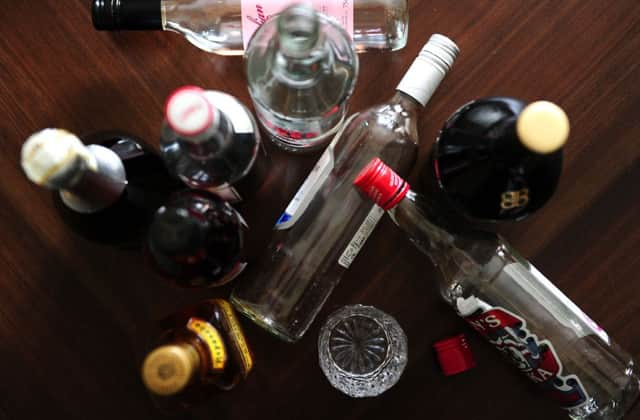Young shun alcohol as old and middle aged warned over booze


More than a fifth of adults (21 per cent) have now cut alcohol from their lives, according to the Office for National Statistics (ONS), up from 19 per cent in 2005.
Binge drinking - defined as regularly exceeding three to four units of alcohol per day for men, and two to three units for women - also fell over the period, from 18 per cent to 15 per cent, although there has been little change since 2011.
Advertisement
Hide AdAdvertisement
Hide AdThe fall in binge drinking was partly because fewer adults chose to drink alcohol and partly because when people did drink they consumed less, the ONS said.
There was also a rise in the proportion of teetotal 16 to 24-year-olds, increasing from 19 per cent in 2005 to 27 per cent in 2013.
The ONS report said the falls in drinking between 2005 and 2013 “were a result of changes among younger adults, with little or no change in older groups”.
The figures show women who live with dependent children are the most likely to be teetotal and least likely to binge-drink, while men who do not live with children are least likely to avoid drinking and most likely to binge.
Advertisement
Hide AdAdvertisement
Hide AdThey revealed a higher proportion of teetotallers in London (32 per cent) than anywhere else in England and Wales - compared with only 15 per cent of those living in the south west of England and 20 per cent in Yorkshire.
More than one-third (36 per cent) of people living in Scotland and north east England admitted to binge-drinking in the week before the survey was conducted, higher than any other region amid evidence there was more heavy drinking in the North, with 30 per cent of people admitting to binging in Yorkshire.
At the other end of the scale, just 22 per cent of those polled in the East of England, South East and West Midlands said they had exceeded the Government’s drinking guidelines.
A Department of Health spokesman said: “It is extremely pleasing to see that the number of people binge drinking continues to go down, and it is particularly good to see that young people are drinking less, and hopefully getting into healthier drinking habits for life.”
Advertisement
Hide AdAdvertisement
Hide AdRosanna O’Connor, director of alcohol, drugs and tobacco at Public Health England, said drinking habits varied across the country, with people in the north of England more likely to binge.
“Alcohol-related problems are still widespread in England and alcohol is one of the leading risk factors for illness and premature death,” she said.
A spokesman for the Portman Group, which represents the drinks industry, said: “These positive trends are part of a decade-long culture change around our improving relationship with alcohol in this country. But alcohol-related harms still remain and some local areas suffer much more than others.”
Jackie Ballard, chief executive of Alcohol Concern, said: “More than half of those who drink do so at risky levels and middle-aged and older drinkers are regularly drinking above recommended limits. It’s this regular drinking of a bit too much too often that stores up all sorts of health problems and explains the 8,400 deaths a year directly related to alcohol.”
Official figures show alcohol misuse costs the NHS £3.5 billion a year.